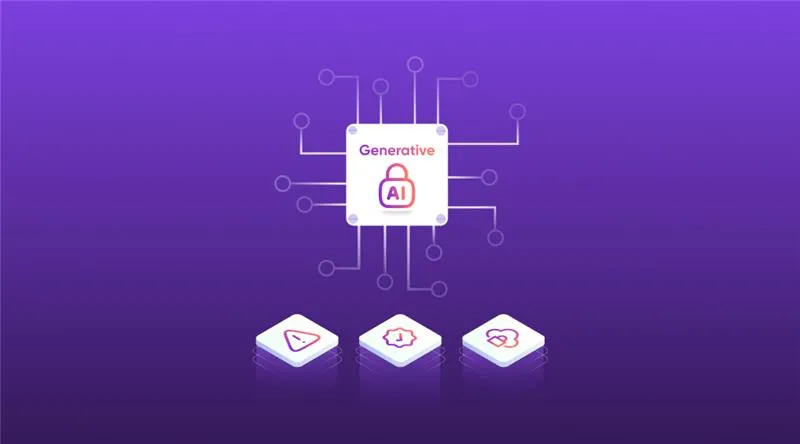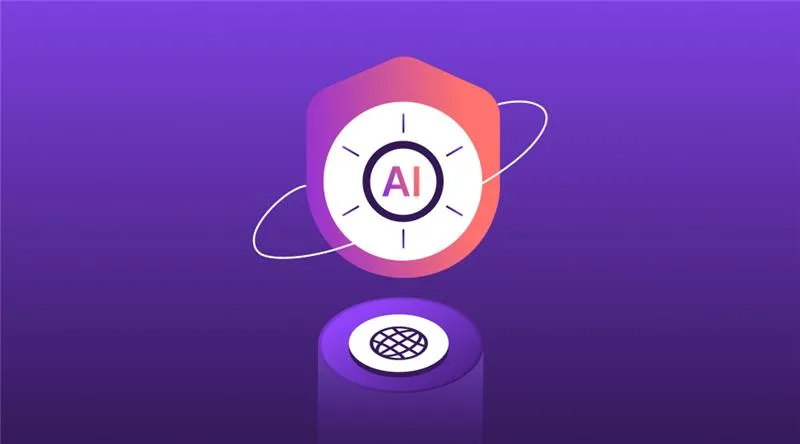Technology

4 min

The manufacturing industry has long been a backbone of economic development, driving innovation and productivity across various sectors. However, as global competition intensifies, manufacturers are under increasing pressure to optimize operations, reduce costs, and deliver higher-quality products faster. This is where Artificial Intelligence in manufacturing comes into play. By harnessing the power of AI, manufacturers can revolutionize their processes, making them more efficient, flexible, and responsive to market demands.

By Dhruv Joshi
17 Feb, 2025
The global AI in manufacturing market was worth USD 3.90 billion in 2023 and is projected to grow at a 41.5% CAGR. Deloitte’s survey shows that 93% of companies view AI as key to growth and innovation in the sector.
AI's role in modern manufacturing is multifaceted, impacting nearly every aspect of the production process. From predictive maintenance to quality control, supply chain management, and beyond, AI technologies are being integrated to create more innovative, more efficient manufacturing environments.
One of the most immediate and visible impacts of Artificial Intelligence in manufacturing is the automation of repetitive tasks. Traditionally, many manufacturing processes involved labor-intensive activities that were time-consuming and prone to human error. AI changes the game by enabling the automation of these tasks, resulting in:
Increased Productivity
AI-powered robots and machines can operate continuously without breaks, significantly boosting production rates. This 24/7 operation allows manufacturers to meet tight deadlines and handle larger volumes of work without sacrificing quality.
Enhanced Precision
Unlike human workers, AI systems do not suffer from fatigue, ensuring consistent accuracy and precision in assembly, welding, and packaging tasks. This reduction in variability leads to higher-quality products and fewer defects.
Cost Efficiency
By automating repetitive tasks, manufacturers can reduce labor costs while increasing output. This cost efficiency allows for better resource allocation toward innovation and business growth.
Workforce Transformation
While AI takes over mundane tasks, human workers can focus on more complex and creative activities. This shift in responsibilities can lead to the upskilling of employees, who can take on roles in AI supervision, programming, and maintenance, ultimately leading to a more skilled workforce.
Give a read to detailed study on How AI is Shaping the Bank Industry? ---->
In the era of big data, manufacturers are inundated with vast amounts of information from various sources, including sensors, production equipment, and supply chains. AI analyzes this data in real-time, providing actionable insights that drive better organizational decision-making.
Real-Time Monitoring
AI systems can monitor every aspect of the manufacturing process in real-time, identifying inefficiencies, bottlenecks, or anomalies as they occur. This enables quick corrective actions, minimizing downtime and maximizing productivity.
Predictive Analytics
AI uses historical data and machine learning models to predict future trends, equipment failures, and demand fluctuations. These predictive capabilities allow manufacturers to proactively address potential issues before they escalate, optimizing maintenance schedules and reducing costs.
Operational Optimization
By analyzing production data, AI can identify opportunities for process improvements, such as optimizing machine settings, reducing energy consumption, or reallocating resources. This continuous optimization leads to more efficient operations and a higher return on investment.
Strategic Decision Making
AI's ability to process complex data sets also aids long-term strategic planning. Manufacturers can use AI to simulate different scenarios, assess potential risks, and develop strategies that align with market demands and company objectives.
Consumers increasingly demand products tailored to their specific needs and preferences in today's market. Artificial Intelligence in manufacturing empowers manufacturers to meet these demands through greater customization and flexibility in their production processes.
Mass Customization
AI enables mass customization, where manufacturers can produce personalized products at scale. By analyzing customer data and preferences, AI systems can automatically adjust production lines to create customized products without extensive retooling.
Flexible Manufacturing Systems (FMS)
AI-driven FMS allows manufacturers to quickly switch between different product configurations and adapt to changing market demands. This flexibility reduces lead times and will enable companies to respond more swiftly to customer orders or market shifts.
Adaptive Supply Chains
AI's role extends beyond the factory floor to the entire supply chain. By predicting changes in demand and adjusting inventory levels accordingly, AI ensures manufacturers can deliver customized products on time without overstocking or running into shortages.
Product Innovation
AI-driven insights into customer behavior and preferences can also fuel innovation, guiding the development of new products more closely aligned with market needs. This leads to a more dynamic product portfolio and a stronger competitive edge.
Siemens
They use AI to predict when their factory equipment might break down. By analyzing sensor data, they can schedule maintenance before problems happen, saving them time and money.
General Electric
GE creates AI-powered digital twins of its jet engines. These virtual copies let engineers test different scenarios and predict when an engine will need maintenance, which boosts performance and makes the engines last longer.
Fanuc
This robotics company uses AI to teach its robots how to do more complicated tasks. The AI helps robots learn from experience and adapt to new situations, making them more useful and efficient.
Adidas
Adidas uses AI to give customers personalized product recommendations and even design custom shoes. By looking at customer data and preferences, they can offer products tailored to what people actually want.
Amazon
Amazon uses AI in its warehouses to manage inventory, figure out the best routes for picking and packing orders, and predict what customers will want. This means faster deliveries and lower costs.
AI integration in manufacturing creates a transformative shift, pushing the industry toward remarkable advancements and greater efficiencies. Explore the top AI use cases in manufacturing, complete with real-life examples.

One of the most significant ways AI is being used in manufacturing is through predictive maintenance. By utilizing AI algorithms to analyze data from sensors embedded in machinery, manufacturers can predict when a piece of equipment is likely to fail. It allows them to perform maintenance at the optimal time, preventing costly downtime and extending the life of their equipment.
Reduced Downtime: Preventive maintenance based on AI predictions minimizes unexpected equipment failures.
Cost Savings: Companies can significantly reduce maintenance costs by avoiding unplanned repairs and extending equipment life.
Improved Efficiency: Regular, data-driven maintenance ensures machinery operates at peak efficiency.
• Data Collection: Sensors are installed on critical machinery to collect real-time data on performance and condition.
• Machine Learning Algorithms: These algorithms analyze the collected data to identify patterns and predict potential failures.
• Integration with ERP Systems: Predictive maintenance systems are integrated with enterprise resource planning (ERP) systems to automate maintenance scheduling.
Give a read to our detailed blog on How AI is Shaping the Bank Industry?
Quality assurance is a critical component of manufacturing, and AI is enhancing this process by automating inspections and ensuring consistent product quality. AI-powered machine vision systems can detect even the most minor defects more accurately than human inspectors, reducing the likelihood of defective products reaching customers.
Higher Accuracy: AI systems can detect defects that may be invisible to the human eye.
Consistency: Automated inspections ensure uniform quality across production batches.
Waste Reduction: Early detection of defects minimizes waste and reduces the need for rework.
• High-Resolution Imaging: Cameras with high-resolution capabilities are used to capture detailed images of products.
• Machine Learning Models: These models are trained to recognize defects based on historical data and continuously improve over time.
• Real-Time Integration: AI systems are integrated into production lines for real-time quality control and feedback.
Supply chain management is a complex and critical aspect of manufacturing that can benefit greatly from AI. AI in Manufacturing can optimize supply chain operations by analyzing vast amounts of data, from demand forecasting to inventory management and logistics.
Demand Forecasting: AI algorithms analyze historical data and market trends to predict future demand accurately.
Inventory Optimization: AI helps maintain optimal inventory levels by predicting when materials will be needed, reducing overstock and stockouts.
Logistics and Delivery: AI improves logistics by optimizing routes, reducing delivery times, and lowering transportation costs.
• Data Integration: AI systems are integrated with supply chain management software to consolidate data from various sources.
• Predictive Analytics: Machine learning models forecast demand and optimize inventory levels.
• Supplier Management: AI helps assess supplier performance, manage risks, and ensure timely materials delivery.
Robotics and automation have long been staples of the manufacturing industry, but AI is taking these technologies to the next level. AI-powered robots can perform complex tasks with greater precision and flexibility, making them invaluable assets on the factory floor.
Increased Efficiency: AI robots can operate 24/7 without fatigue, significantly increasing production output.
Precision and Accuracy: AI enables robots to perform tasks with high levels of precision, reducing errors and improving product quality.
Adaptability: AI-powered robots can quickly adapt to new tasks and production changes, making them versatile tools in a dynamic manufacturing environment.
• Automated Assembly: Robots handle repetitive and complex assembly tasks with consistent quality.
• Material Handling: AI-driven robots efficiently manage the movement of materials throughout production.
• Collaborative Robots (Cobots): Cobots work alongside human workers, enhancing productivity and safety.
AI is also transforming the way products are designed and developed. AI can help create more efficient, innovative, and customer-centric products by analyzing previous designs and customer feedback.
Faster Design Cycles: AI accelerates the design process by generating multiple design alternatives and optimizing them based on specific criteria.
Data-Driven Customization: AI enables manufacturers to create personalized products tailored to individual customer preferences.
Enhanced Innovation: AI helps designers explore new ideas and identify the most promising concepts for development.
• Generative Design: AI algorithms generate numerous design options based on defined parameters, allowing designers to select the best solutions.
• Simulation and Testing: AI-powered simulations test designs under various conditions to identify potential issues before production.
• Customer Feedback Analysis: AI analyzes customer feedback to inform design improvements and ensure products meet market demands.
Energy consumption is a significant cost in manufacturing, and AI is crucial in optimizing energy usage. AI systems analyze energy consumption patterns and identify opportunities for improvement, helping manufacturers reduce costs and minimize their environmental impact.
Cost Reduction: Optimizing energy usage leads to significant cost savings.
Sustainability: AI helps manufacturers achieve their sustainability goals by reducing energy waste.
Operational Efficiency: AI ensures energy is used efficiently without compromising production quality.
• Energy Monitoring: AI systems monitor real-time energy consumption across machines and processes.
• Optimization Algorithms: AI algorithms adjust energy settings based on real-time data to minimize waste.
• Predictive Maintenance: AI predicts when equipment will require maintenance to prevent energy inefficiencies.
AI enhances workforce management by optimizing scheduling training and ensuring workplace safety. AI systems can analyze worker performance, predict labor needs, and identify potential safety hazards before accidents occur.
Optimized Scheduling: AI ensures that the right number of workers are scheduled based on production needs, reducing labor costs.
Personalized Training: AI analyzes worker performance data to develop personalized training programs that address individual needs.
Safety Monitoring: AI systems monitor workplace conditions in real-time to identify potential hazards and prevent accidents.
• AI-Powered Scheduling: AI tools integrate with human resource management systems to automate workforce scheduling.
• Performance Analytics: AI analyzes worker performance data to identify improvement areas and provide actionable insights.
• Safety Systems: AI integrates with IoT devices to monitor environmental conditions and ensure compliance with safety standards.
AI is revolutionizing decision-making in manufacturing by providing real-time insights and predictive analytics that help managers make informed decisions. Whether optimizing production schedules or responding to market changes, AI ensures that decisions are data-driven and aligned with business goals.
Real-Time Insights: AI analyzes data in real-time, providing managers with up-to-date information to make timely decisions.
Predictive Analytics: AI predicts future trends and outcomes, helping manufacturers stay ahead of the competition.
Strategic Planning: AI assists in long-term planning by analyzing market trends and internal data to forecast future needs.
• Data Integration: AI systems consolidate data from various sources to comprehensively view operations.
• Predictive Models: AI develops models that predict future outcomes based on historical data and current trends.
• Scenario Analysis: AI enables managers to run different scenarios to evaluate potential outcomes and make the best decisions.
Despite the numerous benefits, implementing AI in manufacturing comes with its challenges. These include the high cost of AI systems, the need for skilled labor, data privacy concerns, and the complexity of integrating AI into existing processes.
• High Costs: Implementing AI can be expensive, especially for small and medium-sized manufacturers.
• Skills Gap: There is a growing need for skilled workers who can manage and maintain AI systems.
• Data Privacy: Protecting sensitive data while implementing AI systems is a significant concern.
• Integration Complexity: Integrating AI into existing manufacturing processes can be challenging and requires careful planning.
Artificial Intelligence in Manufacturing is profoundly transforming the industry, bringing many benefits, including increased efficiency, significant cost savings, and improved product quality and innovation.
As AI technologies in manufacturing continue to advance, companies that adopt these innovations will be better equipped to excel in a competitive and ever-evolving market. By harnessing the power of AI, manufacturers can discover new avenues for growth and success, staying ahead of industry trends and capitalizing on emerging opportunities.
Generative AI Implementation Strategy: From Concept to Deployment (Step-by-Step Guide)
By Sannidhya Sharma
5 min read
How to Design a Web App: From Wireframes to Working Prototype
By Dhruv Joshi
5 min read
How Much Does Generative AI Development Cost in 2026?
By Dhruv Joshi
5 min read
How to Build an AI Adoption Roadmap That Ensures Measurable ROI
By Garima Saxena
5 min read

Technology

7 min
Generative AI is moving fast into enterprises, from banks to hospitals to government agencies. Adoption is rapid, but security planning lags. Unlike traditional systems, these models can be exploited through prompt injection, poisoned data, or manipulated to leak sensitive information. They are also misused for phishing, deepfakes, and malicious code.


Technology

7 min
AI-powered Web Application Firewalls (WAFs) go beyond static rules by using machine learning, anomaly detection, and predictive analysis to block zero-day threats, reduce false positives, and protect APIs at scale. Unlike traditional WAFs, they self-learn, adapt in real time, and cut operational costs while improving compliance and trust.


Technology

5 min
AI is redefining mobile app security by transforming how threats are detected, tested, and prevented. From continuous monitoring and fraud detection to compliance with regulations, AI ensures apps remain resilient against modern risks. This means safer apps, protected users, and stronger businesses. Investing in AI-driven security today builds trust, drives growth, and secures long-term competitive advantage.


Feeling lost!! Book a slot and get answers to all your industry-relevant doubts